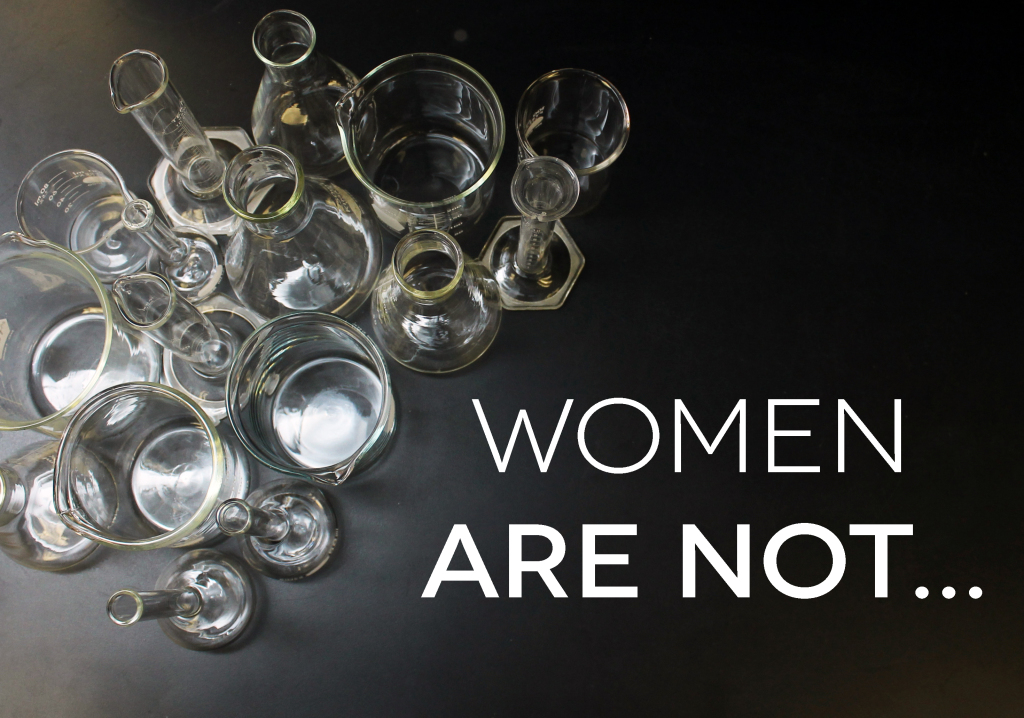Women are not a rare sight on college campuses.
At Ball State, about 58 percent of undergrads are women. But when it comes to pursuing degrees in STEM fields – science, technology, engineering and math – classrooms across the country have a significantly lower proportion of women.
While women represent half of all college graduates with bachelor’s degrees in science and engineering, they only make up about 28 percent of employees in those fields, according to the “Science and Engineering Indicators” report by the National Science Board.
The number of degrees awarded to women in computer sciences, mathematics, physics and engineering are also declining. But that doesn’t stop some women from trying to break into male-dominated careers.
Meghan Duffy, a freshman computer science major, said that being in the minority doesn’t intimidate her. Instead, it inspires her.
“Honestly, I think I might have a bigger advantage because of positive sexism,” she said. “I think, in the end, because there’s so few women in the field, it may end up benefiting me. I don’t totally like that, that exists, but I like that it benefits me.”
As an undergrad and a professional, Ball State alumna Katie Schneider said she’s never gotten negative comments about being a woman chemist. She said people often ask her why she would want to study chemistry, not because she’s a woman, but because it’s a difficult major.
Even though there were more men in Schneider’s chemistry program, she said most of her chemistry classes were an even mixture of men and women.
“I’d say it’s an even playing field, because it’s not easy. Most of my lab partners are guys, and when you have other guys working with you, you realize they aren’t much smarter than you,” Schneider said.
So if it’s possible for them to be successful, why aren’t more women going into STEM fields?
A recent advertisement by Verizon shows how subtle comments to girls impact their decision on going into science and math fields.
The “Inspire Her Mind” commercial depicts one girl’s development from toddler to teenager as statements like “who’s my pretty girl?” and “you don’t want to mess with that,” are made towards her.
The video suggests that these messages discourage girls from STEM subjects in school.
The commercial references a statistic from the National Science Foundation, which says that even though 66 percent of fourth grade girls say they like science and math, only 18 percent of women go into engineering.
The powerful ad poses a compelling question: isn’t it time we told her she’s pretty brilliant, too?
Rachel Kraus, a Ball State sociology professor who has researched gender inequalities, agrees that messages from families and teachers about gender expectations greatly impact what characteristics children develop.
Things like behavior, clothing and what to play with are some characteristics that have been “genderized.”
“Toys that are deemed most appropriate for boys are going to be things that are going to emphasize movement, building, action, assertiveness, leadership, these kinds of characteristics,” Kraus said. “Whereas the toys given primarily to girls are going to very much emphasize caretaking, taking care of other people, the home.”
However, when women are looking for jobs in the STEM field, they won’t have much difficulty. The U.S. Department of Commerce said STEM job growth was three times that of other fields.
“The job market is great, and that’s another reason women should go into technology-oriented things, because smart companies are looking for smart women,” said Kirsten Smith, director of Women Working in Technology.
Women Working in Technology is a Ball State organization that works to “promote and empower women in the field of technology” by encouraging middle and high school girls to enter technology fields. The group also supports college students as they enter professional careers, according to their website.
Women who earn a STEM degree are less likely than men to continue into STEM occupations, according to the U.S. Department of Commerce’s report “Women in STEM: a Gender Gap to Innovation.”
Smith said that while her graduates haven’t reported having problems in the workforce, gender inequality is often subtle.
“It’s what we call ‘being killed by a thousand paper cuts.’ It’s not that someone is going to say, ‘you’re a woman; I’m not going to give you the opportunity. I’m going to give it to this guy.’ It’s that often organizations do not have the structure to support families,” said Smith.
She said this lack of family support by companies could result in women believing they can’t balance a career and family, leaving some to back off the career path.
Kraus said that burden is one of the reasons women struggle in male-dominated fields, but the way women perceive themselves plays a role as well.
“One of the things [sociologists] know from research is that women tend to underestimate their abilities, whereas men have more confidence in their abilities,” said Kraus. “So it is not uncommon at all for women, regardless of what is actually the case, to say ‘I’m not smart in math.’ Well, you kind of need to feel like you’re smart in math to want to go into the STEM fields. If you don’t feel like you’re smart in math, why would you want to pursue a field that’s going to rely heavily on your ability to do math?”





